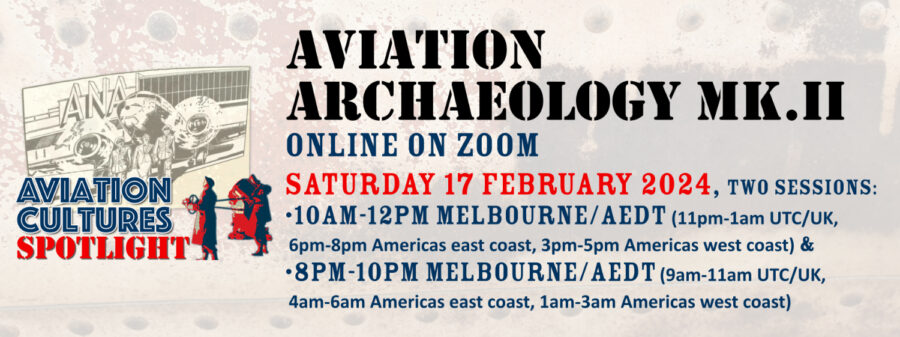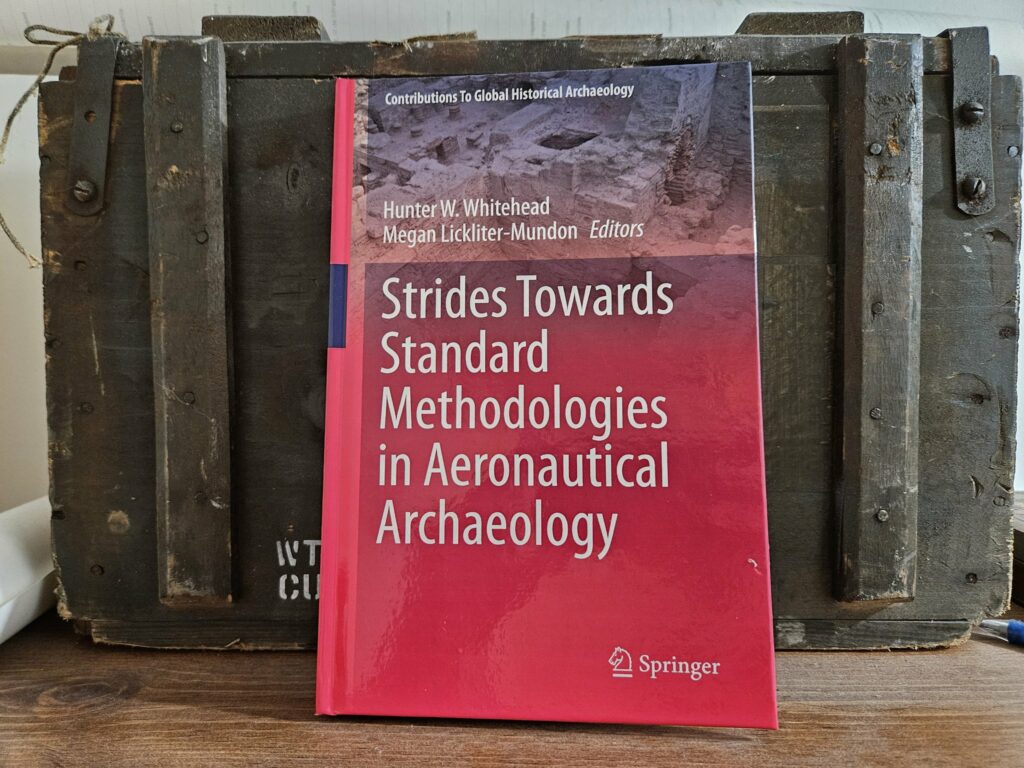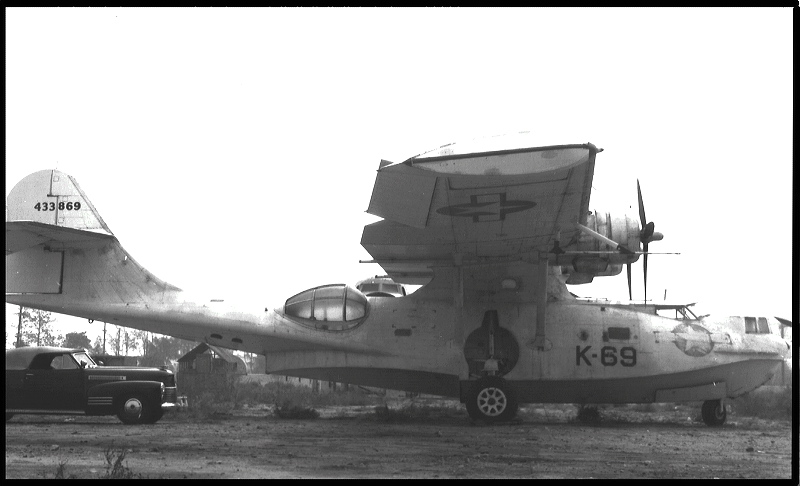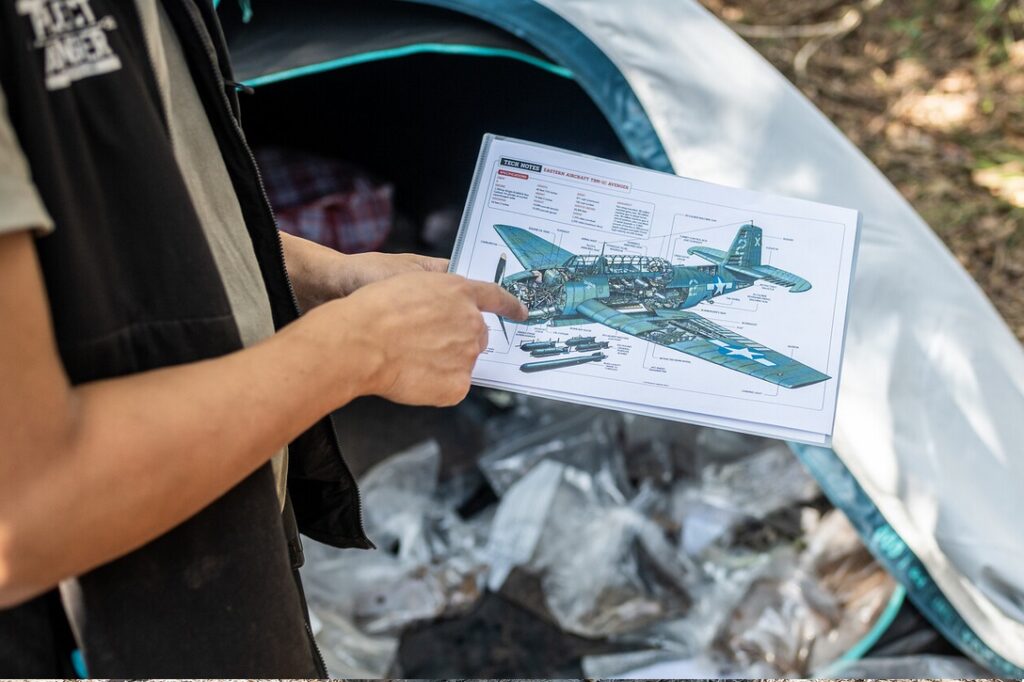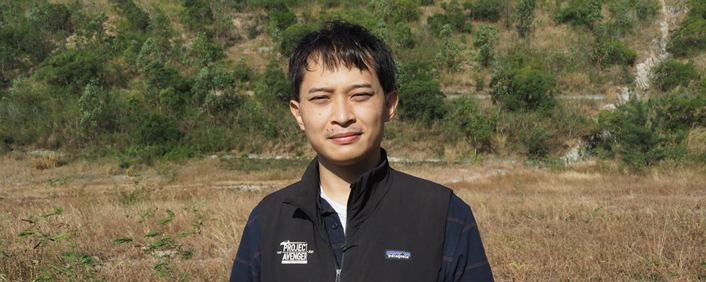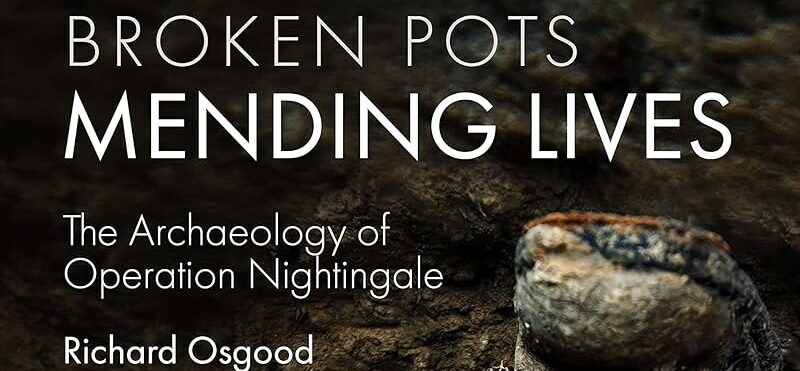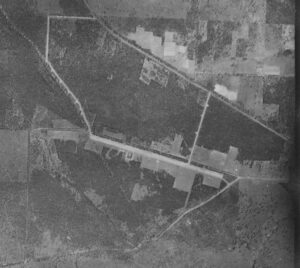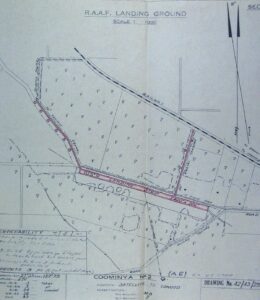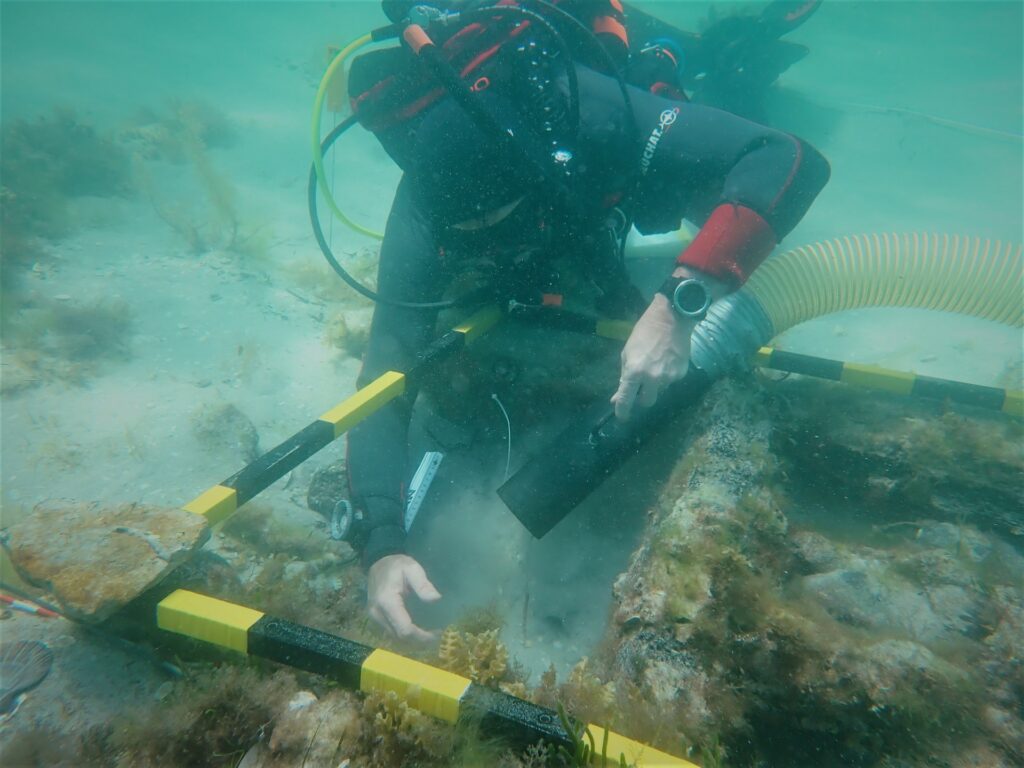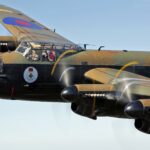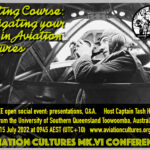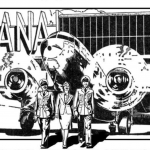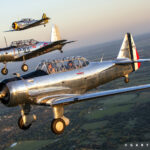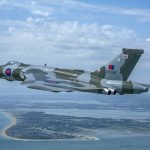By James Kightly
The Aviation Cultures Conferences team have arranged for several professional, expert aviation archaeologists with top level insight from the US, UK, Hong Kong and Australia, to present online at this Saturday’s Aviation Cultures Conference Spotlight: Aviation Archaeology Mk.II. It’s free, on Zoom, Saturday Australian time (starting Friday in the Americas).
After the success of their first Spotlight, held online in August 2021, the Aviation Cultures organisation, here led by the team’s archaeologists Tash Heap and Daniel Leahy, are very pleased to have assembled a gathering of archaeological experts who will present on a variety of sites and themes, over two separate two-hour sessions (check your local times, below). The guest archaeologists are dialing in from Australia, Hong Kong, the USA and the UK to present live, via Zoom, followed by a live audience Q&A. Register, for free, to attend HERE.
The first session will be Saturday, 10am-12pm Melbourne (AEDT); 11pm-1am UK/UTC; 6pm-8pm FRIDAY Americas East Coast; 3pm-5pm Americas West Coast.
The second session is Saturday, 8pm-10pm Melbourne (AEDT); 9am-11am UK/UTC; 4am-6am Americas East Coast; 1am-3am Americas West Coast.
The first session presents:
Hunter W. Whitehead is an archaeologist with experience in maritime archaeology, cultural resource management, marine geophysics, and historical archival research. He completed his Master’s in Historical Archaeology at the University of West Florida, with a concentration on maritime and aeronautical archaeological studies. He has been a leading expert in aircraft wreck studies and has focused on sites offshore Pensacola, Florida and within Lake Huron. In 2020, he founded the AerAqua Project, a non-profit organization dedicated to the preservation and protection of aviation heritage in the United States and around the world. Hunter is also the co-editor of the recent volume Strides Towards Standard Methodologies in Aeronautical Archaeology, published by Springer.
Hunter’s talk is titled “Pensacola’s Underwater Fleet: Exploring the United States Cradle of Naval Aviation.” For over a decade, the author has undertaken a systematic archaeological examination of submerged naval aircraft located off the coast of Pensacola, Florida, a significant site in the annals of naval aviation and a crucial locus for aircraft carrier qualification training. The objective of the study is to establish baseline characterizations of both identified and as-yet-undiscovered aircraft, thereby illuminating their historical and technological contexts. The methodology employed encompasses geophysical surveys and diver investigations, facilitating a comprehensive understanding of these submerged artifacts.
Jeff Wedding and Susan Edwards will be to talking about a Catalina that crashed in Lake Mead in 1949. The OA-10A was the United States Army Air Forces (USAAF) equivalent to the United States Navy Consolidated PBY-5A, commonly known as the “Catalina”. The surplus airframe was acquired and converted for post-war civilian use by the Charles Babb Company of Los Angeles. During the second leg of its multi-legged shakedown flight, the plane took off from the Boulder City Airport on October 24, 1949, and attempted a water landing in the Boulder Basin area of Lake Mead in southern Nevada, USA. Unfortunately, the landing gear was still extended, and upon contact with the lake’s surface the plane flipped and burned. Four of the five souls aboard perished.
First documented as a cultural resource in 2007, the amphibious aircraft now rests in two major sections at the bottom of Lake Mead. Previously at a depth of roughly 190 feet, a dive that was once out of reach for recreational divers, drought induced record-low water levels have made the wreck a little more accessible at approximately 135 feet below the surface. The Lake Mead Catalina is illustrative of how the National Park Service (NPS) balances public access and preservation of unique underwater resources for future generations.
The second session:
Dr Michael Rivera will present the results of an archaeological investigation into the remains of a WWII-era plane that crash-landed in the mountains of Tai Tam, Hong Kong, on 16 January 1945. By examining the physical remains of the crash site and conducting historical research to contextualise the surface remains found, important details about the events leading up to, and after, the TBM Avenger’s Hong Kong mountainside crash.
The findings also shed light on the technological capabilities of historical, geophysical and archaeological researchers in Hong Kong. And finally, the research highlights the potential for further community involvement in learning and reflecting on the city’s rich past.
Dr Michael B. C. Rivera is a Filipino-Chinese researcher, educator, public speaker and biological anthropologist based at the University of Hong Kong. Obtaining his PhD in 2019 from the University of Cambridge, his main research focuses on human history and development over the last six million years. He is the lead archaeologist managing the investigation of the remains of the Avenger that crashed in Hong Kong in 1945. Dr Rivera is currently working on establishing a greater presence of interdisciplinary studies, bioanthropology and archaeological science in Hong Kong. He has collaborated on projects in the Philippines, Singapore, and further beyond in Southeast Asia and Europe. Dr Rivera also works extensively in making scientific work and research ideas accessible through various forms of teaching, social media and public engagement.
Richard Osgood has worked for the Ministry of Defence in the UK since 2004 where he is the senior archaeologist for the Defence Infrastructure Organisation. His archaeological work includes the excavation of army camp sites, First World War trenches and tanks, and air of the Second World War.
Richard’s presentation will focus on his work with Operation Nightingale. Military crash sites are places of extreme trauma and yet an exploration of these events has the potential to provide catharsis to veterans of more recent conflicts. This talk will examine some of these themes as part of Operation Nightingale – a programme which uses archaeological work to aid the recovery of military personnel.
Michael O’Donnell’s presentation is titled “Brisbane at War: The development of airfields around Brisbane during WWII”. As many will know, Queensland was on the frontline in support of Allied offensives against the Japanese invasion of the South West Pacific and New Guinea. In response to the expansion of Japanese forces, Brisbane’s aviation landscape was transformed to support preparations for the war in the South West Pacific. Sites and facilities built or upgraded included airfields, which went from two at the start of WWII to twenty-one by its end.
The expansion of this aviation landscape transformed Brisbane in the post WWII era. Some facilities were converted to civilian use and others were retained for military use. Some of the sites and structures are still in use today, 76 years after WWII. However, today there is limited understanding or visual indication of what remains or lost to time of this significant WWII cultural heritage. This paper explores one aspect of the research that is looking at the whole military (naval, army air force and civil military) cultural landscape of Brisbane during WWII, what was there, what happened to it and what has been lost.
Michael is a Master of Philosophy candidate at University of New England and is researching the cultural landscape of Brisbane during WWII, looking at the maritime, aviation and land-based defense facilities developed and used by the military. He has experience as a senior heritage officer with the Queensland Government. He has conducted research into Queensland submerged aircraft wrecks and is interested in conflict, aviation and maritime archaeology and understanding cultural landscapes. Michael has had a lifelong interest in aviation, which started as a child attending airshows with his father, who was a recreational pilot. Micheal is a former full-time and now reservist maritime warfare officer with the Royal Australian Navy.
The Aviation Cultures team are delighted that the presenters have volunteered to join them to share their expertise. Do come along and pose your questions to them, live. (For a flavor of the event, you can see and hear! a recording of the first Aviation Archaeology Spotlight – titled ‘Digging Up Aviation’ – online:
https://aviationcultures.org/spotlight-digging-up-aviation/ )
But remember, this Saturday’s event is FREE, but you need to just register here: https://aviationcultures.org/spotlight-aviation-archaeology-mk-ii/







